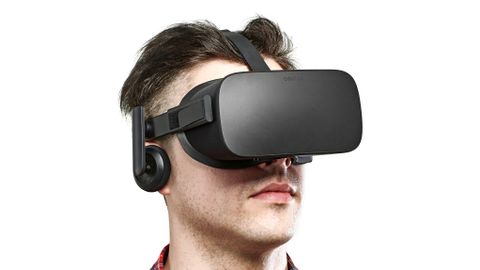
It's hard to believe the OCULUS RIFT BUNDLE is over a year old already. It was one of the biggest launches of last year and yet, by most accounts, it was still early days. The year since has provided an opportunity for the headset to stretch its wings a bit – a number of high-profile games have launched on the hardware and it's finally received motion controllers in the form of Oculus Touch.
To make matters even better, it's also received a permanent price cut moving forward: $499/£399 (around AU$640) for the headset, two sensors and the Touch Controllers. That's a far cry away from the Rift's closest competitor, the HTC Vive, which comes in at a blistering $799/£749 (around AU$1,000).
This price drop could be interpreted in a number of ways. In one sense, it could point to the fact that Oculus Rift sales have been less than what Facebook expected them to be – and the price drop is an attempt to drum up sales. Another perfectly fine interpretation is that Facebook desperately wants this hardware in customers' hands – even if that means selling it at a loss.
But you're not here for speculation, right? You're here because you're interested in reading about one of the world's coolest, most bleeding-edge technology: VR. Now, after a full year with the Oculus Rift, the HTC Vive and PlayStation VR, can we finally say 'virtual reality is here to stay'.
OK, before we dive too deep into the virtues of VR, let's take a moment to talk about the two most important aspects to consider before deciding to buy a Rift of your own: price and the minimum PC requirements.
If you've been following the virtual reality scene you probably know this already, but the Oculus Rift requires a wired connection to a PC in order to have enough power to drive two 1080x1200 resolution images to each lens inside the headset. It can't just be any old run-of-the-mill PC, either – you're going to need a top of the line gaming PC to enjoy everything the Rift has to offer.
Originally, the minimum specs put out by Oculus called for an Intel Core i5 4590 or equivalent processor, 8GB of RAM and an NVIDIA GTX 970 or AMD Radeon 290 video card. Most of the hardcore gaming community might already have these components on hand, but if you're a casual gamer or currently more of a PC layman, these parts will be the first of two costly investments you need to pay for upfront.
Recently, however, that minimum spec has been brought down to an Intel i3-6100, instead of the more expensive Intel i5-4590, and GPUs can now start from the Nvidia GTX 960 from the recommended 970.
That change brings down the cost of the system required to play VR games to around $499 by Oculus's estimates, and says that it's teaming up with Cyberpower to bring pre-made rigs like that to the public.
The other expenditure is the Oculus Rift itself, duh.